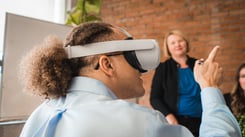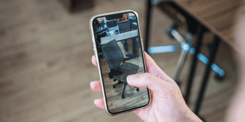VR is changing industries of all kinds, and it’s playing a major role in the transformation of the architecture and design industry. VR and architectural visualization are such a natural match when it comes to the need to create a shared vision, and the ability to immerse a client or prospect into what’s in the designer's mind. Imagine being able, not just to show your clients the plans for the building, floor or remodel they’ve commissioned, but place them inside it. It’s a new world of presenting with VR to your client, which is critical to architects and firms trying to build trust and earn client buy-in.
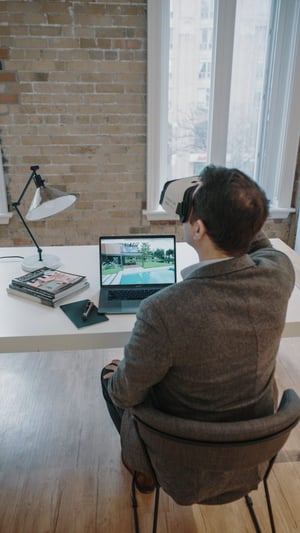
Plainly put, presenting with virtual reality is the simplest and most compelling way to share CAD models with anyone. It is the clearest way to present your design vision to clients, suppliers, contractors, engineers, prospects, and other designers. So what does that look like? If you’ve never given one before, giving an architectural presentation in VR can seem daunting. Change is hard. It’s hard to divert from something you’ve done for so long, but rest assured, the way to ease into the technology is much simpler than you think!
When you use VR, make sure it has purpose
The simplest way to create a presentation that uses VR is to first determine what your purpose is. Make VR work for you and your objective, rather than try and shoehorn what it is your presenting into VR. That may sound obvious, but with shiny new technologies, there’s sometimes a temptation to let the technology do the heavy-lifting (anyone remember the slew of useless apps available in the mid-2000s?). VR highlights great design - but may do the same for bad design. So make sure you have a clear vision of what you want to share.
Start small!
Start small. Think of introducing VR into your presentation in a small way - until you’re more comfortable with using the technology for presentations.
For your first time presenting with VR, you may even wish to still bring your traditional renderings, whether they be on paper or a screen. Start small by presenting as you would normally. Don’t feel VR has to be the entire presentation. Begin with a simple few minutes immersed in VR, rather than making it the bulk. When starting out people sometimes make the error of assuming clients will be enamored with VR and spend a long time in its immersive detail. Our early adopter clients have discovered that this isn’t true - and it’s to their advantage. At Yulio we advocate a ‘pop-in and out’ experience, where you present a design element in VR and your client takes a look - then you put the technology aside and have a discussion. VR is a tool to foster great discussion, not a replacement for it. Using mobile VR makes this possible, as it requires virtually no set up or training to navigate and can be referenced several times during your presentation.
For the record, we also remove all the straps from our headsets at Yulio - which removes client fears of feeling foolish or nauseous trapped inside the technology and helps enable this idea of popping in and out.
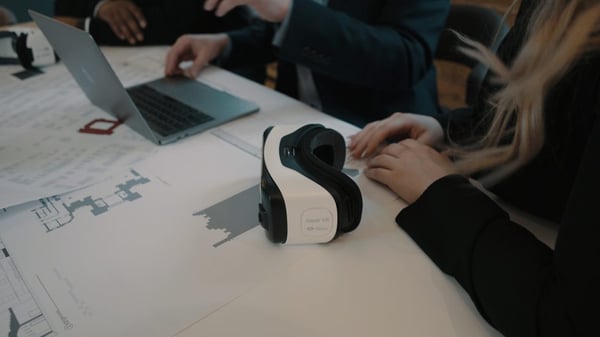
Presenting with VR: Don’t let the technology do the talking
When you take your clients into VR, there’s a good chance they won’t have experienced it before, so let them revel in the novelty of it – how they can turn around and see what’s behind them.
But remember that it can be an isolating experience, so you’ll want to guide their gaze either with software tools in the VR presentation (like Yulio’s Collaborate feature) or with recorded voice if you’re not present (like our audio hotspot features). Another valuable way to create a social experience is to ensure the VR experience is also on a screen in the room so any participants not in the headset can see what’s going on.
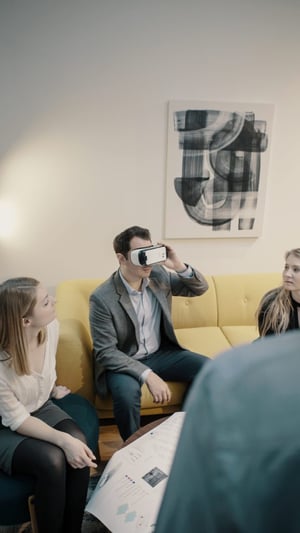
Your client may be more vocal about their opinion, and that's ok!
While you’re walking your client through the VR experience, it’s likely you’ll start to see the benefits of presenting with virtual reality early on. One key indicator is that you may get immediate feedback about the project you’re presenting. Your client may have opinions on the spot about what you’re presenting. Early adopter firms have told us they find clients have much more to say when they’re presented with VR designs vs. other formats, primarily because they have a greater understanding of where they are in your design, and its size and scale. They also report clients having a greater emotional attachment.
For more on this, see our case study with Diamond Schmitt architects and what happened when they started presenting with VR.
Be patient, and let the meeting happen naturally
After you’ve presented in VR a few times, you’ll also likely start to form your own pattern for which questions to ask. Will you let them roam around the space a bit? In our experience, the best presentations are those where you comfortable enough to let your time together roll out organically. They may want more time in VR than you’ve expected, and that’s ok. What’s exciting is that you will have a greater context to the feedback, understanding what your client was looking at when they expressed dislike for ‘that blue thing’ or wondered if the space felt “too big”.
Be prepared at the time to take notes for revisions to address. VR accelerates the decision-making process because people can react to it on the spot. You may no longer have to wait until the next meeting or email to move a design story forward.
With these tips, you can feel confident taking the steps towards presenting with VR. Just remember, like learning or using anything new, getting warmed up to it might take some time, and rehearsal and backups will make you better. Just know that you’re taking the necessary steps towards the future of design, and that’s an exciting step to take! So be proud of the progress you’ve had so far, and get excited about the work you’ll do in the future with the many possibilities that presenting with VR has.
Interested in VR? Sign up for our FREE 5-day email course to learn about the VR industry, or join us for a free training webinar, hosted every other Thursday at 1 PM EST by our Client Success Manager, Dana Warren - Grab your seat here.





